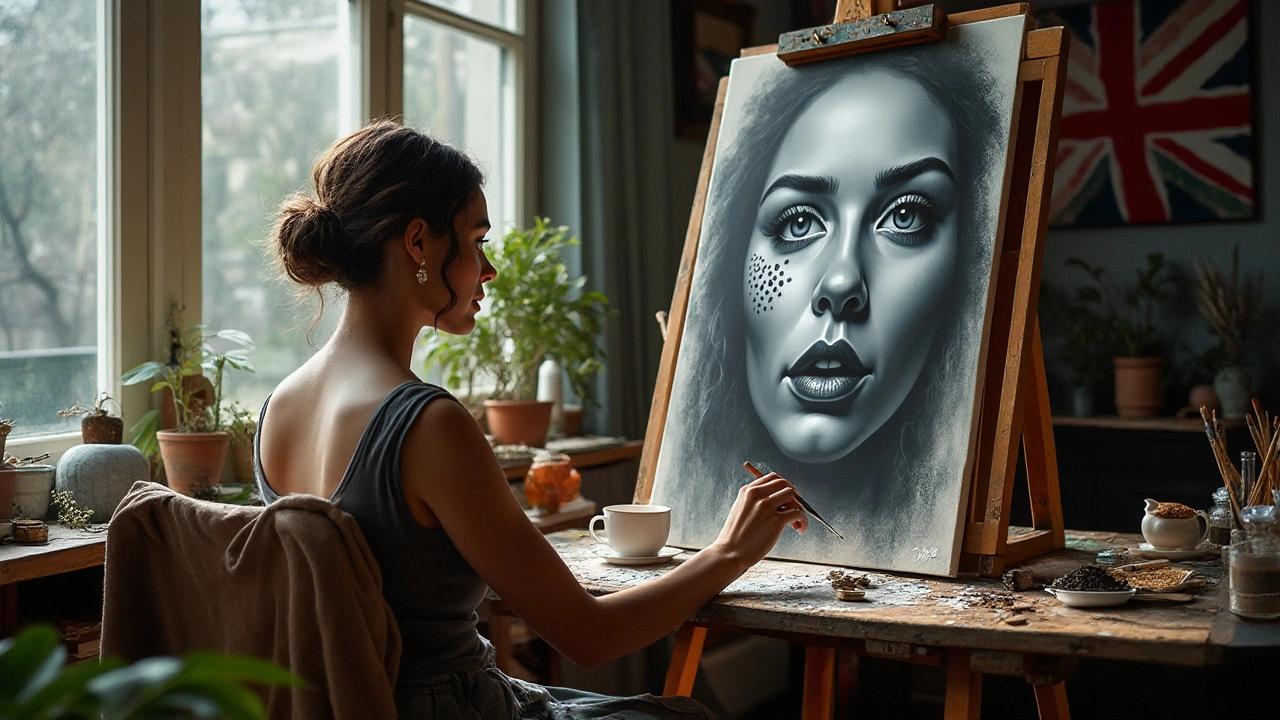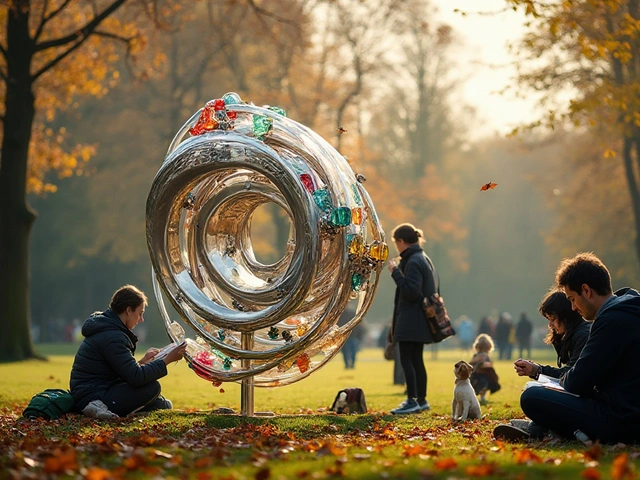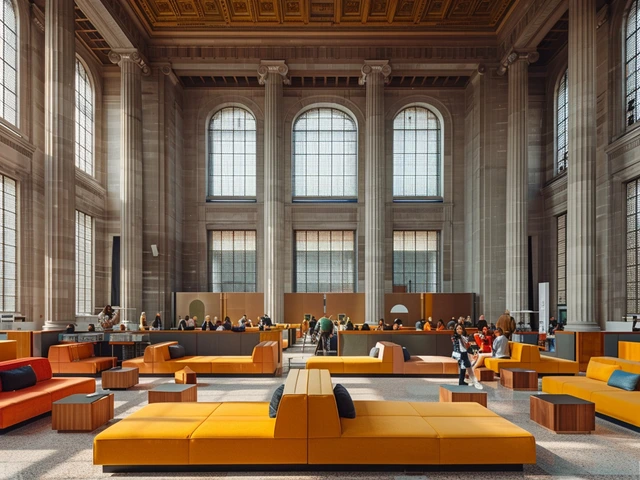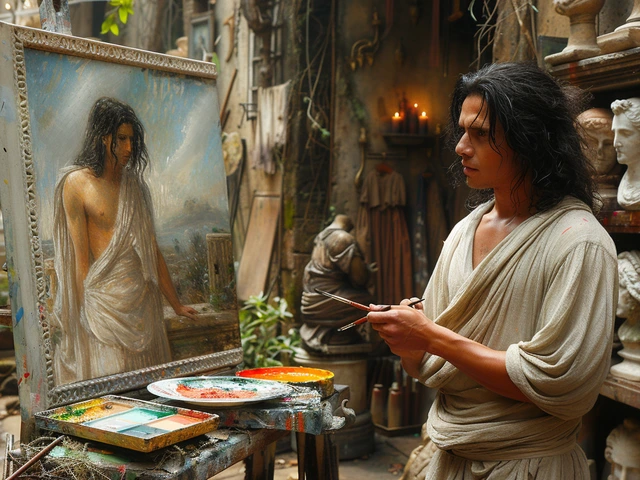Photorealism is a spellbinding art style that pushes the boundaries of traditional painting techniques. Artists in this genre create works that often make observers do a double-take, thinking they're looking at high-resolution photographs instead of hand-painted pieces.
At its core, photorealism requires a meticulous attention to detail, a deep understanding of light, shadow, and texture, and an almost uncanny ability to replicate a scene or subject from a photograph. Whether you're using oils, acrylics, or pencils, the goal remains the same: achieving stunning, life-like accuracy.
This article will explore various aspects of photorealism, from defining what it is, to detailing the essential techniques and tools required. We'll offer practical tips for beginners eager to dip their paintbrushes into this meticulous art form and highlight some of the remarkable artists who've set the bar high in the world of photorealism.
- What is Photorealism?
- Essential Techniques
- Materials and Tools
- Tips for Beginners
- Noteworthy Artists and Works
What is Photorealism?
Photorealism, often known as hyperrealism, is a genre of art that strives to replicate the appearance of high-resolution photographs as closely as possible. Originating in the late 1960s and early 1970s, photorealism became a movement defined by precision, detail, and an authentic representation of life. This art form was a counter-movement to Abstract Expressionism, which dominated the art scene for a long time.
One of the pioneers of photorealism, Chuck Close, brought immense attention to this genre with his massive-scale portraits that captivated viewers. His famous piece, 'Big Self-Portrait,' created with acrylic and graphite on canvas, is often cited as a quintessential example of photorealism. Close's work emphasized the intricate details of human faces, pushing boundaries of what art could achieve.
Photorealism isn't just confined to paintings. It crosses over into other mediums like sculpture and digital art. Artists employ various techniques, such as realistic painting methods, to create works that often make people mistake them for photographs. The level of realism achieved depends heavily on the artist's skill in manipulating light, shadow, texture, and color.
To achieve such realism, many photorealistic artists spend countless hours obsessing over every small detail. This meticulous approach makes the art incredibly time-consuming, yet the results are often staggeringly beautiful and lifelike. As Robert Bechtle, another esteemed photorealism artist, once said,
"Realism is best when it feels like a translation of the world, not just a copy. Photorealism is about capturing life in its exact detail."
Also, it's fascinating to see how modern technology has influenced photorealism. Advanced photography techniques now offer artists a better reference than ever before, enhancing their ability to capture the minutest details. High-resolution cameras, digital image manipulation, and even 3D modeling software have become invaluable tools, allowing for even more nuanced and detailed works.
In the grand scheme of art movements, photorealism offers a uniquely immersive experience. As technology advances, the boundaries of what is achievable in photorealistic art will continue to expand, providing both artists and viewers with ever more stunning visual experiences.
Essential Techniques
Creating art that closely resembles a photograph isn't a matter of just having a good eye; it requires a thorough grasp of multiple techniques specific to photorealism. Painstaking attention to every shadow, highlight, and texture can turn an ordinary piece into something extraordinary. One key aspect is mastering the grid technique, which involves dividing both your photo reference and your canvas into a series of smaller sections or grids. By carefully reproducing what's in each grid square on both the photo and canvas, you can control proportions and maintain accuracy.
Layering is another fundamental method. Artists working with photorealism need to apply multiple layers of paint to gradually build up the image, enhancing its realism. For instance, an artist may start with a base layer of thin, dark tones and then slowly add subsequent layers of lighter colors to create depth and dimension. This technique is particularly essential for capturing the complexities of human skin or the intricate details of reflective surfaces like glass or metal.
One cannot overlook the importance of understanding light and shadow, which can make or break your piece. Properly rendering shadows and highlights gives your work a three-dimensional effect that is crucial for achieving lifelike accuracy. Pay careful attention to where the light source is in your reference photo and mimic that precisely on your canvas.
Blending is another crucial skill. Whether you are using oils, acrylics, or pencil, smooth transitions between colors can help eliminate harsh lines and create a seamless look. Blending tools like soft brushes or blending stumps are invaluable for achieving this effect.
"Every artist dips his brush in his soul and paints his own truth into his pictures." – Henry Ward Beecher
Detailing is often where a piece of lifelike art painstakingly starts looking like a high-resolution photo. For instance, if you're painting a portrait, pay extreme attention to elements like hair texture, eye reflections, and skin pores. For subjects like trees or buildings, focus on the intricate patterns found in bark or brickwork. Using fine liners or detailed brushes can help you add those tiny, crucial details.
The last but not least technique involves patience and time. Some of the most iconic photorealistic artworks have taken artists months, if not years, to complete. Being patient allows you to refine each layer, each stroke, and each detail, ensuring that the final product is not just good but exceptional. Don't rush the process; the journey of creating photorealism is as rewarding as the finished piece.
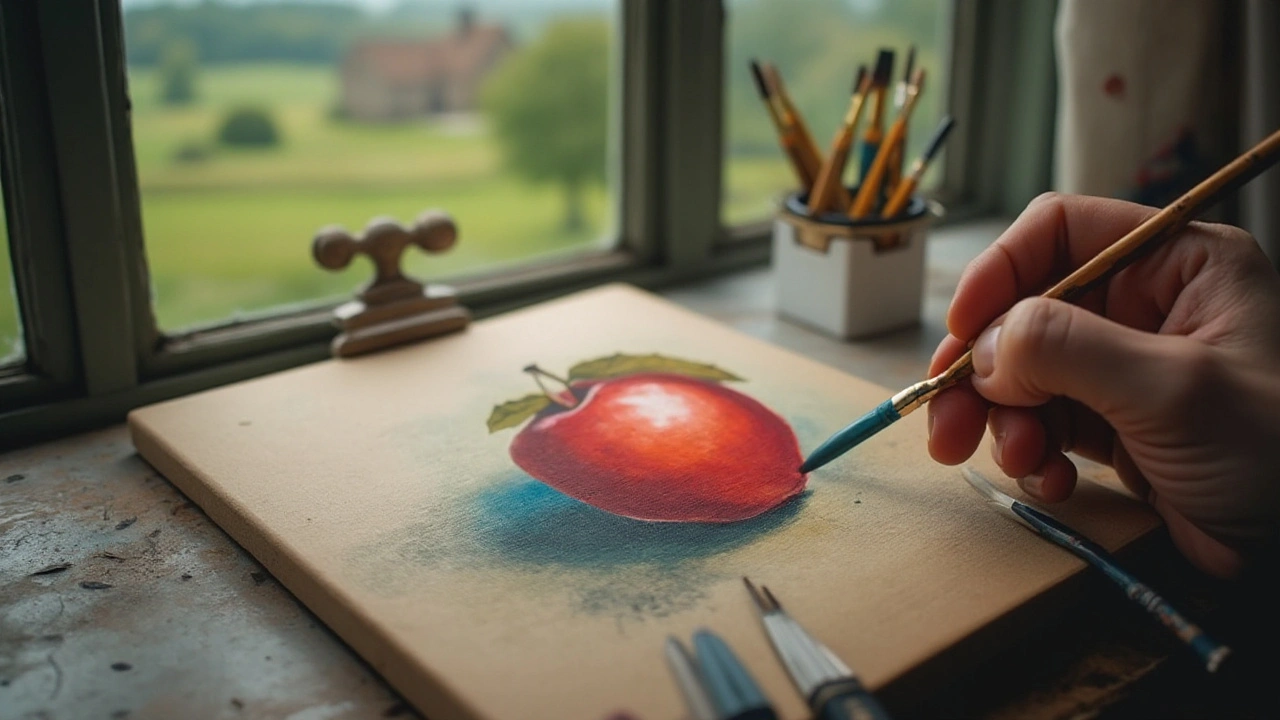
Materials and Tools
Creating lifelike artwork through photorealism involves not just skill and patience, but also a careful selection of materials and tools. It's essential to understand what each item in your toolkit can do to help bring your vision to life.
First off, the choice of paint can greatly affect the final outcome. Many photorealists prefer oils due to their slow drying time, which allows for detailed blending and layering. Acrylics, on the other hand, dry faster and are sometimes favored for their versatility. Selecting high-quality paints from trusted brands like Winsor & Newton or Golden can make a significant difference in the vibrancy and longevity of your work.
The surface on which you paint is equally critical. Canvas is a popular choice, but many photorealists opt for smooth surfaces like wood panels or Masonite. These surfaces allow for finer detail and minimize the texture that might interfere with achieving a photographic effect. Prepping the surface with a high-quality gesso primer can also help create the perfect painting ground.
Brushes come in various shapes and sizes, each serving a unique purpose. For instance, fine-tipped brushes are excellent for intricate details, while broader brushes are ideal for covering large areas. Synthetic brushes are often recommended for acrylics, whereas natural bristles are typically better for oils. Palette knives can also be useful for creating specific textures or effects.
One can't forget the importance of a good easel. A sturdy, adjustable easel that can accommodate different angles and heights will make your painting process much more comfortable. Lighting is equally crucial; natural daylight is best, but if painting indoors, consider investing in daylight-balanced lamps to ensure colors appear accurately as they would in natural light.
Quote from a respected source:
"The tools you use are just as essential as your skill when pursuing photorealism. Always invest in quality materials to achieve the best results," advises renowned photorealistic artist Chuck Close.
Accessories like palettes, painting mediums, and cleaning supplies also play their roles. A glass or wooden palette offers a smooth surface for mixing paints, while mediums can alter the paint’s consistency and drying time. Cleaning supplies, especially for oil paints, include solvents like turpentine or mineral spirits to keep brushes in good condition.
Lastly, don't underestimate the value of a high-quality reference photo. The clearer and more detailed your reference, the more information you have to work with. Photographs should be taken in good lighting conditions to capture every detail, shadow, and highlight. Many artists use projectors or grids to accurately transfer the image onto their canvas, ensuring that proportions remain true to life.
Tips for Beginners
Dipping your toes into the world of photorealism can seem daunting, but with some structured guidance, it can become a deeply rewarding pursuit. If you're a beginner, start by choosing a photograph that holds your interest. Passion for your subject will keep you motivated through the detailed process. Many artists find that starting with a simple still life or landscape helps in mastering basic skills before moving to more complex subjects.
One of the most crucial aspects is to understand light and shadow. Every tiny detail contributes to the larger picture. Hence, having a good light source and observing how it interacts with your subject is vital. Use different shades and tones to create a sense of depth. A trick for beginners is to squint at your reference photo to simplify the various tones, making it easier to replicate.
Investing in quality materials will also make a significant difference. For instance, using high-quality paints and brushes can help you achieve finer details that make your art truly lifelike. Photorealistic paintings often require a smooth surface, so choosing the right canvas or board is key. Many experienced artists prefer using a panel over canvas because it allows for finer details.
Grid techniques are often used to help transfer the photo onto your canvas accurately. Drawing a grid over your reference photo and a corresponding grid on your canvas can help you get proportions right. While some might consider this method tedious, it trains your eye for precision, which is essential in photorealism. Gradually, you'll find that your ability to estimate proportions improves.
Don’t rush the process. Mastery comes with patience. Spend time working on small sections of your painting rather than trying to bring the whole painting to life at once. This approach ensures that each part is given the attention it requires. It’s not uncommon for photorealistic paintings to take several months to complete. Remember, it’s a marathon, not a sprint.
Another tip is to continually step back from your work. Observing your painting from a distance can offer a fresh perspective and help you see areas needing adjustment. It can be easy to get lost in the minutiae, but taking regular breaks to reassess your progress is beneficial.
In the words of Chuck Close, a famous photorealist artist, "Inspiration is for amateurs; the rest of us just show up and get to work." His words emphasize that the key to success is consistent effort and dedication. Keep practicing, be persistent, and don't be disheartened by initial results.
Lastly, connect with a community of photorealism artists. Whether through social media or local art groups, sharing your work and receiving feedback can be incredibly encouraging. Seeing how others tackle the intricate details can provide fresh insights and inspire your methodologies.
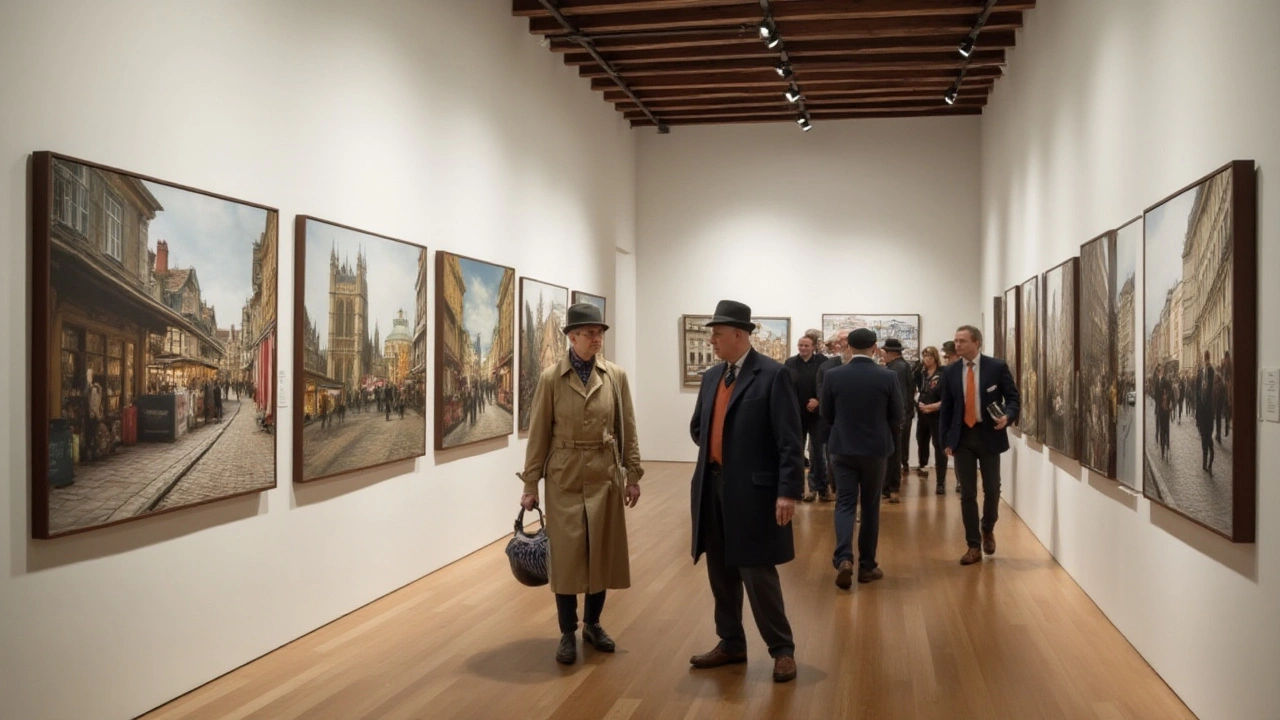
Noteworthy Artists and Works
One cannot delve into the world of photorealism without mentioning Chuck Close. He is often hailed as a pioneer in the field. His large-scale portraits, often measuring several feet in height, are created through a painstaking process where he uses a grid system to meticulously transfer a photograph to canvas, square inch by square inch. His ability to transform simple photographic references into breathtaking paintings has cemented his place in art history. One of his most iconic pieces is 'Big Self-Portrait', a hauntingly detailed black-and-white depiction of his own face.
Another name that shines brilliantly in the photorealism landscape is Audrey Flack. She is known for her vibrant, almost hyper-realistic still life compositions. Flack's work often includes symbolic objects meticulously arranged to create both depth and a narrative within the frame. Pieces like 'Marilyn (Vanitas)' not only showcase her technical prowess but also deliver deeper societal commentaries. She seamlessly blends photographic clarity with emotional depth, making each piece a visual and intellectual treat.
Denis Peterson is another master worth mentioning. His photorealistic paintings are often credited with evoking deeper emotional responses. He does not merely replicate photos but selects subjects that tell compelling stories. His depictions of modern urban decay and human strife, such as 'Homeless Man', capture not just the physical but the emotional and psychological states of his subjects, compelling viewers to look beyond the surface.
Ralph Goings is another artist who contributed significantly to this genre. Known for his impeccable renderings of diners, trucks, and American life scenes, Goings brought everyday objects to life with extraordinary detail. His pieces like 'Airstream' deliver a nostalgic, yet analytically sharp view of classic American culture.
"Photorealism is an exciting movement that combines artistry and technical skill. These artists not only recreate scenes but also inject their unique perspectives into each piece." — Art Historian, Linda Nochlin
The works of these artists are not just remarkable for their technical skill; they also push the boundaries of what art can achieve. By depicting scenes with such high-level accuracy, they encourage viewers to examine and appreciate the finer details of the world around them. These realistic paintings serve as a testament to human ingenuity, proving that with passion and skill, one can create lifelike masterpieces that resonate on multiple levels.

